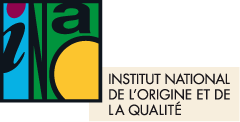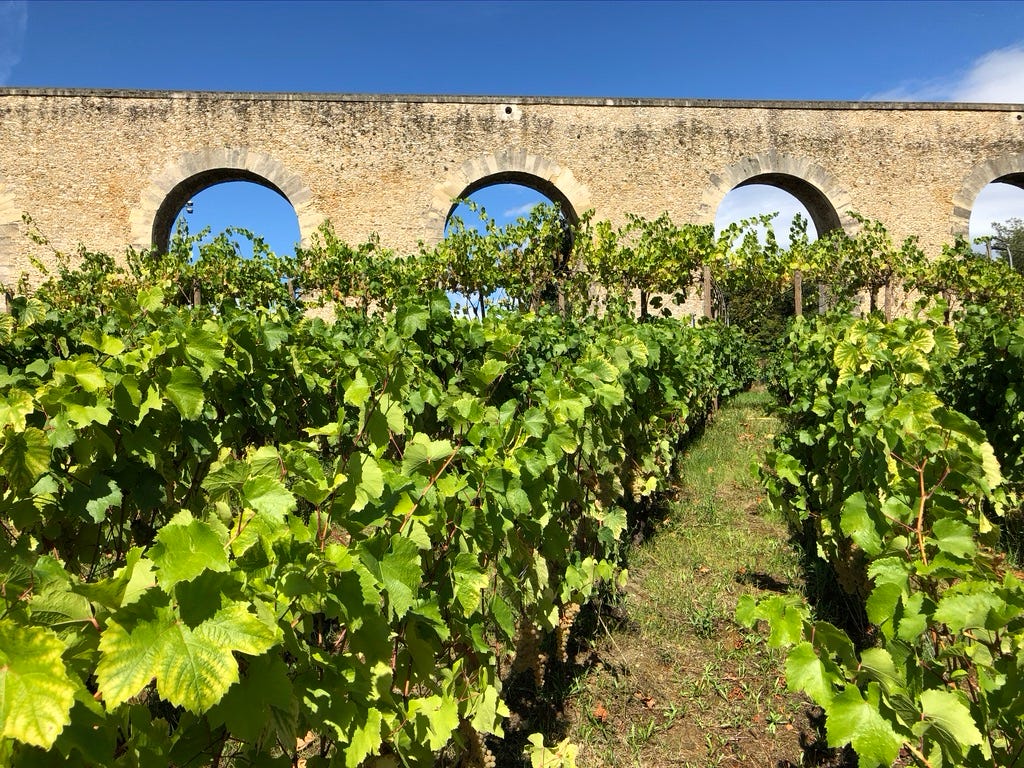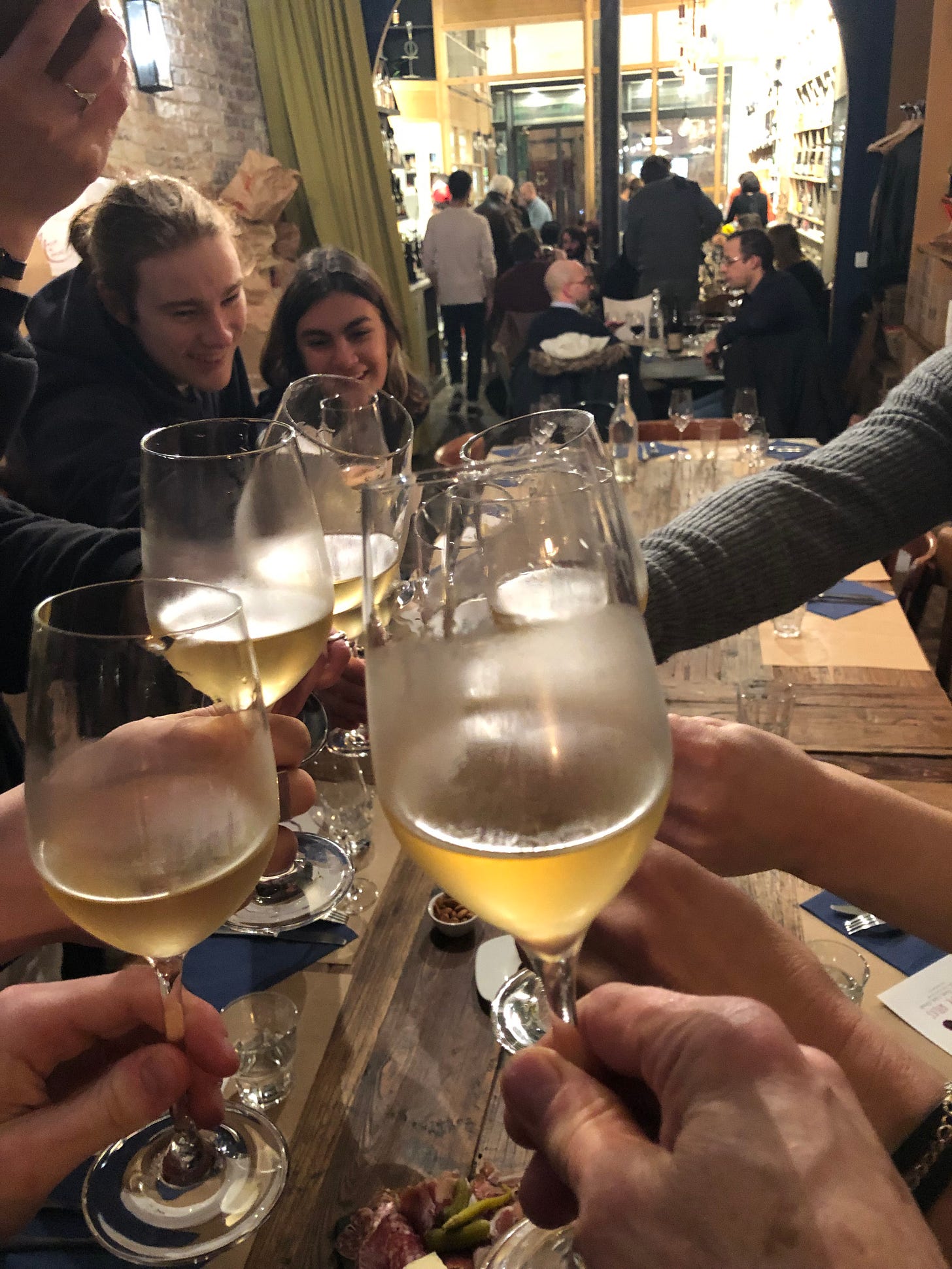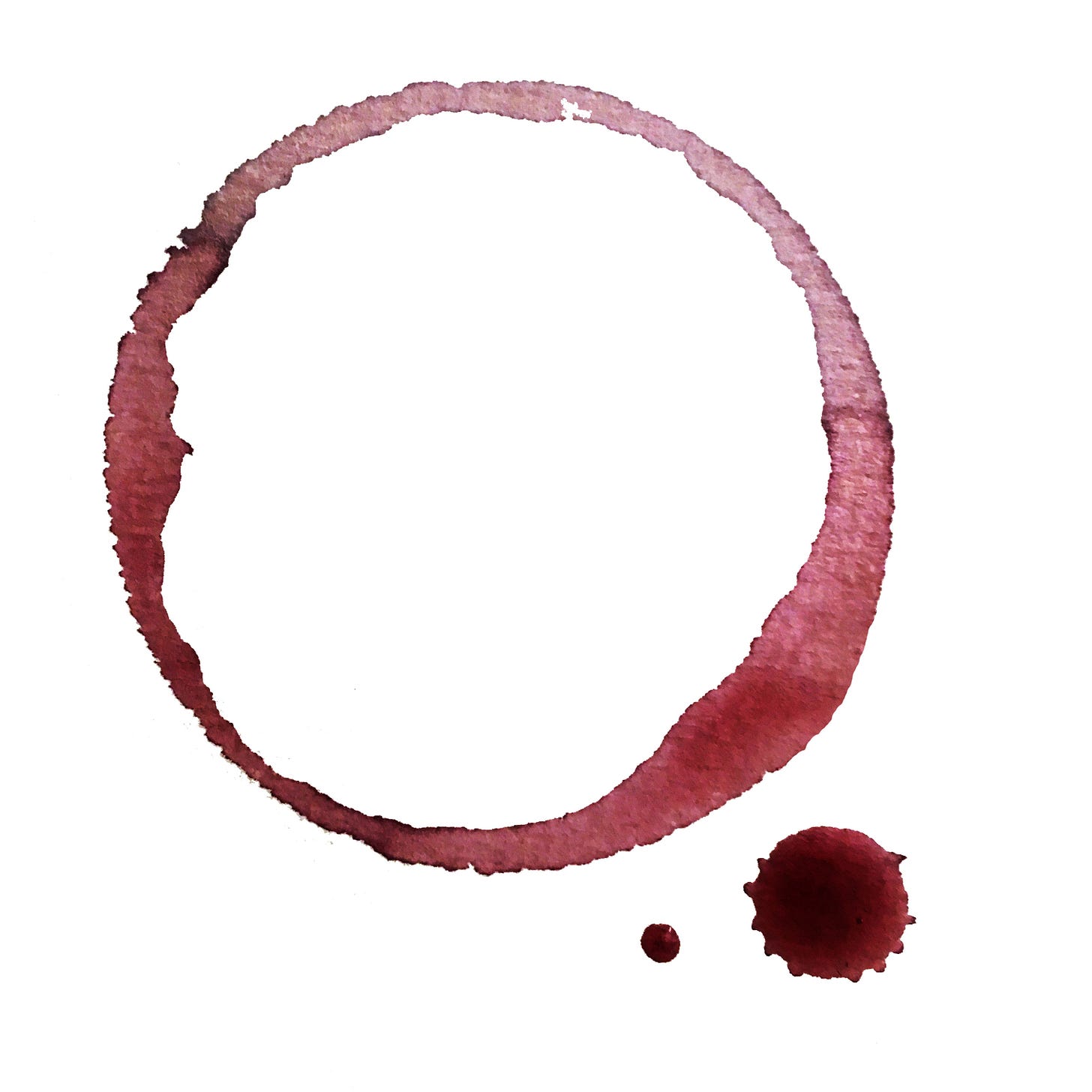AOC, AOP, VDF, VDT, IGP, DGC, INAO
“What's in a name? That which we call a rose, by any other word would smell as sweet.” (Romeo & Juliet)
Acronyms have to be among the most exasperating and misleading of all forms of communication. The same letters can mean wildly different things depending on one’s interests, geography or sense of the absurd. Just for fun, I asked ChatGPT to come up with definitions for the acronyms above (without specifying that they are related to wine) and in less than a second, it produced these, complete with detailed and rather convincing descriptions (scroll to the bottom to get the detailed definitions):
AOC: Ambiguous Office Cuisine
AOP: Avoidance of Productivity
VDF: Velociraptor Dance Floor
VDT: Virtual Detox Therapy
IGP: Infiltration of Grandma's Pies
INAO: International Napping Association Organisation
But as this is about wine, we’re going to provide definitions of what those combinations of letters really mean in the enchanting world of French (and European) wine classifications, and then talk about why they too can be misleading. Each of them signifies a specific designation or classification system, and they are overseen by various organisations. Here's a semi-official (or officious) explanation of each:
AOC - Appellation d'Origine Contrôlée:
Definition: AOC, which translates to "Controlled Designation of Origin," is a French wine classification system that indicates the geographical origin and specific regulations governing the production of wines. It ensures that wines from a particular region adhere to strict standards regarding grape varieties, viticultural practices, and winemaking techniques.
History: The AOC system was established in 1935 to protect and promote the unique characteristics of wines associated with specific regions. It aimed to maintain the quality and authenticity of French wines, reflecting the importance of terroir—the interaction between soil, climate, and grape varieties.
AOP - Appellation d'Origine Protégée:
Definition: AOP, which stands for "Protected Designation of Origin," is the term used in the European Union to replace AOC. AOP has a broader application, encompassing various products beyond wine, such as cheese and other agricultural products.
History: The change from AOC to AOP occurred in 2009 as part of the European Union's efforts to standardise and simplify the designations of origin for various products. The AOP designation retains the principles of AOC but extends its application to a wider range of agricultural products.
VDF - Vin de France:
Definition: VDF, or "Vin de France," is a classification for table wine that does not fall under any specific regional appellation. It allows winemakers more flexibility in terms of grape varieties and winemaking techniques, offering a broader category for wines produced throughout France.
History: Vin de France was introduced in 2010 as part of a wine law reform. It replaced the previous category known as "Vin de Table" and aimed to provide French winemakers with greater freedom to experiment with different grape varieties and winemaking methods while still maintaining quality standards.
VDT - Vin de Table:
Definition: VDT, or "Vin de Table," was the former designation for basic table wines in France. This category had fewer regulations compared to higher classifications and was often associated with everyday, inexpensive wines.
History: Vin de Table was replaced by the Vin de France designation in 2010, as part of the effort to modernise and simplify the French wine classification system. The change aimed to remove the negative connotations associated with the term "table wine" and encourage higher-quality production.
IGP - Indication Géographique Protégée:
Definition: IGP, or "Protected Geographical Indication," is a wine classification that represents a middle ground between AOP and Vin de France. It allows for more flexibility in grape varieties and winemaking techniques than AOP but still maintains regional specificity.
History: The IGP category was introduced in 2009, replacing the former Vin de Pays classification. It was part of the broader European Union effort to harmonise wine regulations across member countries while preserving regional identities.
INAO - Institut national de l'Origine et de la Qualité (previously Institut National des Appellations d'Origine)
Definition: INAO, or the "National Institute of Origin and Quality," is a French organisation responsible for overseeing and regulating the country's appellations of origin, including AOC and AOP. It ensures that the production of agricultural products, including wine, adheres to specific geographical and quality standards.
History: INAO was established in 1935 along with the AOC system. It plays a crucial role in maintaining the integrity of French appellations by defining and enforcing standards, conducting inspections, and protecting the reputation of products associated with specific regions.
Why an article about these pesky acronyms? Because the Île-de-France, the region around and including Paris, once the largest wine producing region in the entire world, which had lost its status as a wine producer, has once again been granted the status of a commercial wine producing region and, since 2016, has its own IGP. What this means in real terms is that Parisians (and anyone coming to visit Paris) will again be able to drink local wines. When will that be? Well, there are already a number of IGP Île-de-France wines on the market, but most are coming from very (very) young vines and so not yet in their stride.
Parisians have been drinking their own wine for centuries and even though the quantity, the quality and the range have varied from one period to another, the recent trend is very positive. There has been renewed interest in wine and its consumption. More ‘cavistes’ (wine shops) have opened in the past few years in Paris than ever before. And wine bars, introduced by the English in their modern form (where what you find on your plate struggles to rise to the level of the wine in your glass), have become so numerous and the wines so good, it’s difficult to not just stumble upon one.
This was not always the case, as up until quite recently, there seemed to be a sociological division between the good and the bad, where mediocre wines were served in almost every café, bistro, restaurant and ‘bar à vins’. There were the happy few who could afford access to decent wines, and then there was everyone else. The recognition of quality appeared to have been forgotten with an appalling range of undrinkable plonk being served everywhere with not the slightest protestation.
What changed? There have been several developments that have contributed to this renaissance. As new world markets opened to wine, greater attention along has been given to wine as evidenced by a burgeoning number of wine publications, reviews, and bloggers who have challenged the status quo. A new generation of wine makers motivated by quality rather than by quantity has led to the adoption of biodynamic and organic farming methods, which slowly but surely are becoming the norm. Biodynamic farming, entirely marginal and ridiculed in the 1990s, is now mainstream. Large holdings taken over by a younger generation have been reduced to what can be properly managed by one person (about 5-8 hectares), minimising financial pressures and freeing the growers from the constraints imposed by industrial methods.
Even bolder steps have been taken by those challenging the dictates of the AOC (Appellations d’Origine Contrôlée) to plant varietals that are forbidden in their ‘appellation’, thereby sacrificing the right to the AOC label. In the past, not having the AOC designation meant a drop in revenue, but the AOC is losing its credibility as being a mark of quality, simply because most of these innovators are making better wines without it. Some consumers even go so far as to abjure it entirely, buying only wines with the VDF classification (Vin de France). Driven by a passion for quality and originality—allowing the ‘terroir’ to express itself rather than imposing technology to ‘improve’ the wine—wine growers who no longer value the AOC have multiplied throughout the country, generally selling their wines for more than their peers.
The AOC, which appeared in France in the 1930s as a guarantee of authenticity and, theoretically, of quality, has been steadily losing its sheen. Simply put, the wines produced from soils that are chemically-treated, progressively lose their microbial life, which is the very essence of ‘terroir’. Consequently, these industrial or ‘conventional’ wines are no longer able to express their terroir, which is the most fundamental part of geographical identity.
Ironically, those working naturally (organically and biodynamically) and in observance of the dictates of the AOC but who have returned to a true expression of terroir by revitalising soils, have often been eliminated from the AOC since inclusion is determined by peer review. Conventional producers, who are the majority in the AOC, find these natural wines ‘atypical’ and so exclude them from the appellation. Which is of course another mark against the AOC, for many see such exclusions, quite logically, as the world turned upside down. Surely those producing wines that are a true representation of terroir from living soils are the best expressions of an AOC and not wines that are being ‘corrected’ with dubious additives because their grapes have lost their vitality from having been produced in dead soils.
Historically, the AOCs were intended to precisely delimit the appellation areas in order to put an end to fraud and counterfeiting. Soon they were also ‘controlled’, subject to regulations concerning grape varieties, yields, viticultural and oenological practices. These regulations were in principle inspired by the ‘local, loyal, and constant practices’ in force in each region and supposed to guarantee the ‘typicity’ of the wine. Many would now say that the greatest fraud are ‘conventional’ wines, which make up most of the AOC, because they no longer express terroir or typicity. The Appellation d'Origine Contrôlée was created by a decree-law in 1935, applicable to wines and eaux-de-vie. The body responsible for their definition, protection, and control, the INAO was created in the same year.
In 2009 the AOP was introduced, though the term ‘AOC’ persists in France. The strengthening of the specifications brought about by the changeover to AOP should breathe new life into quality. While the designation is a guarantee of authenticity, it is not necessarily a guarantee of quality. The opportunity given to rewrite the specifications applicable to these standards is also an opportunity to review the level of requirements.
AOC: Ambiguous Office Cuisine
Ever wandered into the office kitchen and found mysterious leftovers with labels like "Tuesday Surprise" or "Mystery Meatloaf"? Congratulations, you've just experienced the wonders of Ambiguous Office Cuisine! AOC is the ultimate guessing game where every bite is a gamble, and culinary adventures unfold like episodes of a bizarre cooking show.
AOP: Avoidance of Productivity
AOP is not just an acronym; it's a way of life. This art form involves mastering the skill of sidestepping tasks with finesse. From crafting elaborate to-do lists that mysteriously vanish to perfecting the art of looking busy while actually scrolling through cat memes, AOP enthusiasts are the unsung heroes of procrastination.
VDF: Velociraptor Dance Floor
Ever been to a party where the dance floor is transformed into a prehistoric playground? That's the Velociraptor Dance Floor! Picture people dancing with wild, dinosaur-like moves, complete with primal roars and questionable reptilian impressions. It's the only dance floor where the beat is as extinct as the dinosaurs themselves.
VDT: Virtual Detox Therapy
In a world dominated by screens, VDT has emerged as the much-needed therapy to combat digital overload. Picture a serene retreat where people gather to unplug, unwind, and rediscover the lost art of face-to-face conversation. No smartphones allowed – just genuine connections and the soothing sound of people realizing they've forgotten how to make eye contact.
IGP: Infiltration of Grandma's Pies
IGP is not your average covert operation; it's a sweet, delicious mission to sneak into Grandma's kitchen and liberate her legendary pies. Picture a team of skilled infiltrators armed with napkins, ready to discreetly secure a slice of apple, cherry, or whatever delightful flavor Grandma has whipped up. The IGP is a noble cause, driven by the pursuit of pastry perfection.
INAO: International Napping Association Organization
For those who believe that napping is an art form that transcends borders, there's the International Napping Association Organization. Picture a world where strategic siestas are not just encouraged but celebrated. Membership includes a complimentary eye mask, access to the world's coziest blankets, and an annual convention where attendees compete for the title of Supreme Snoozer.
In the realm of acronyms, humour dances hand in hand with creativity, creating a tapestry of words that adds a splash of whimsy to the everyday. Cheers to decoding the alphabet soup of life!
Wine Walks!
For more information, click on the underlined links:
Clos Montmartre - Paris in Your Glass
Paris' most famous wine producing vineyard
Latin Quarter Unbottled!
An insider's journey to the oldest wine neighbourhood in the city
Wine Your Way Through the Marais
The Marais seen through a wineglass
Saint-Germain-des-Prés
Discover the vinous spirit of medieval Paris
3-Vineyard Cycling Tour
A comprehensive overview of medieval Paris
Paris Bottled!
Short on time? This one’s for you.










So glad my AOP didn't interfere with my pleasure at learning from your latest piece. And now I must pay my daily dues to the INAO, happier and smarter.